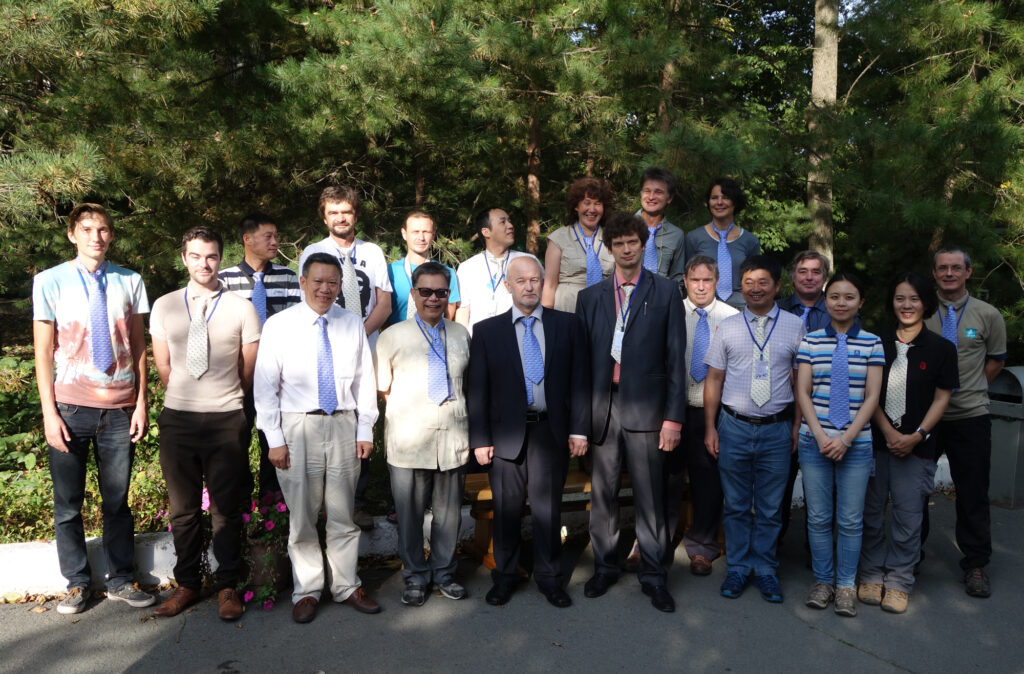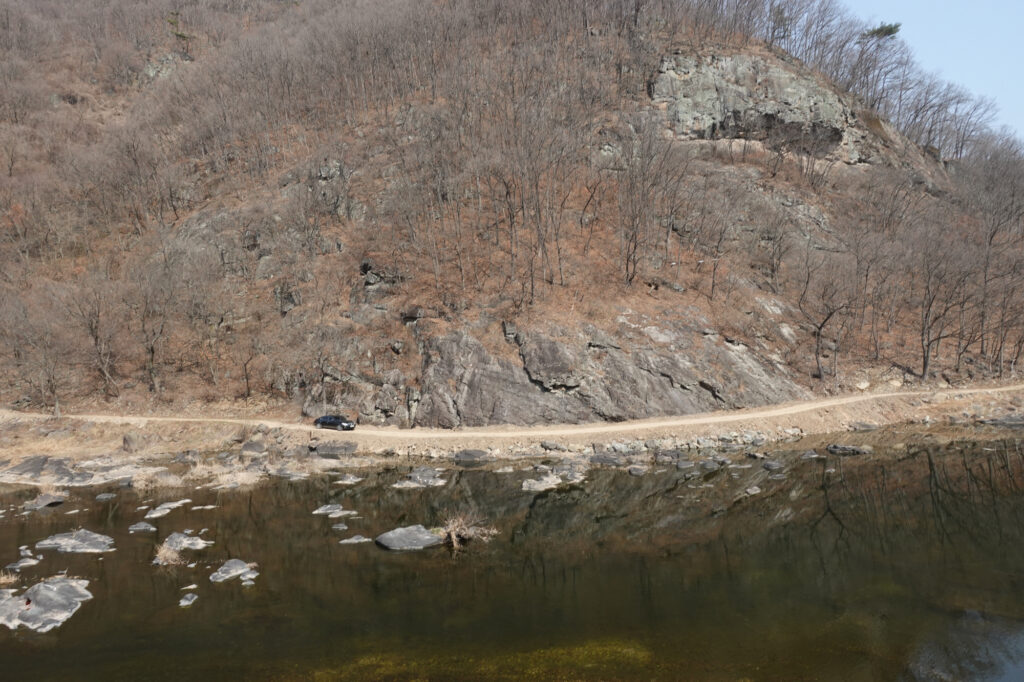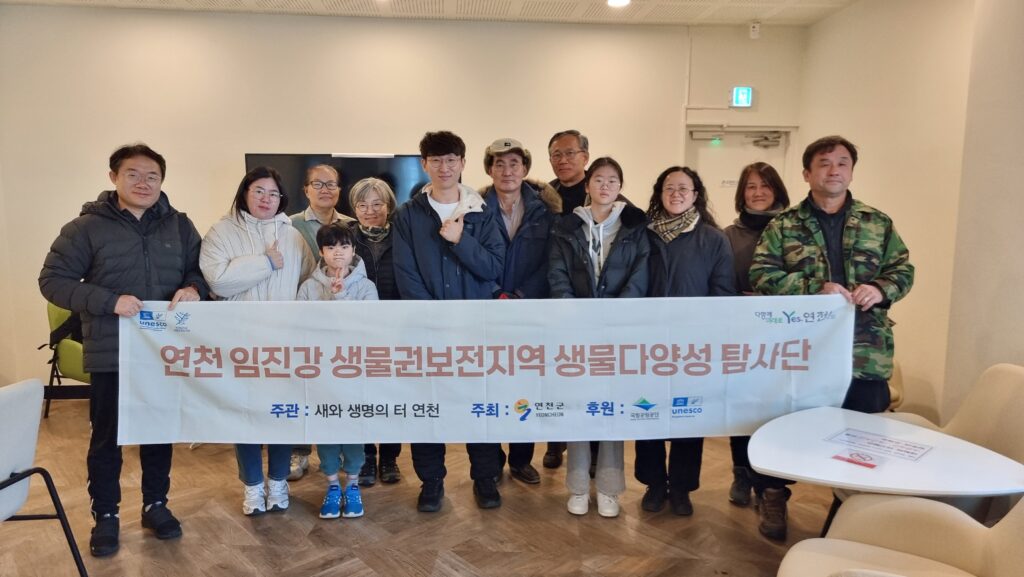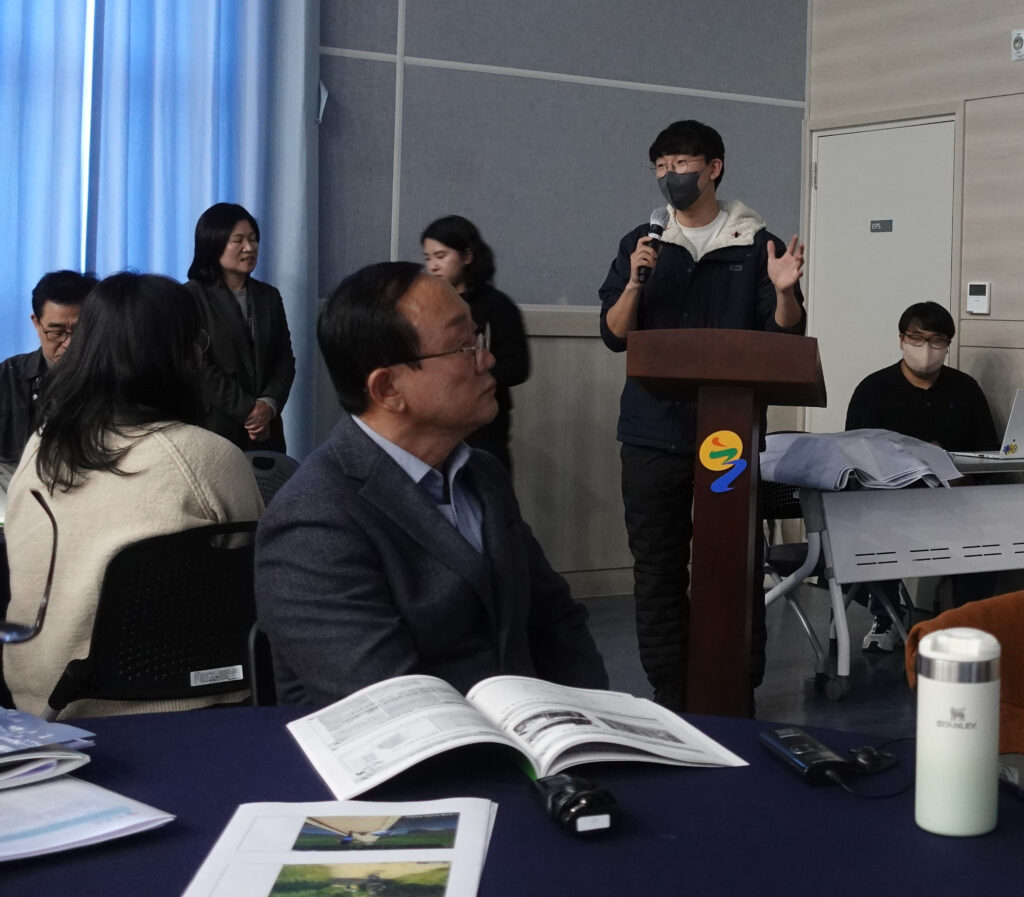Dr Nial Moores, Birds Korea. November 26th 2023.
All across our increasingly degraded planet, biodiversity conservation remains challenging work. Progress really can take years. For any species, you need to conduct good research; you need to identify threats and solutions to those threats; you need to build consensus; and you then need to take the most appropriate actions. Here in the ROK, in spite of the rapid growth in economic might and research potential, the Environmental Protection Index finds that protected areas still do not contain much of the nation’s ecological diversity; and the nation currently (as of 2022) ranks a dismal 103rd out of 180 in the Biodiversity Habitat Index. Many nationally and globally threatened bird species, and the habitats that they depend on, remain poorly researched or protected – if at all. One such species is the globally Endangered Scaly-sided Merganser 호사비오리. Although assessed as Nationally Endangered, to the best of our knowledge, there has still been no coordinated national survey of the species led by academic or government research institutions; before 2023 no scientific papers had been published on the species in the ROK (our peer-reviewed paper on conservation of the species on the Korean Peninsula has now been published in the journal Wildfowl …); and it appears that no protected area has yet been established or managed primarily for this species. Instead, various editions of the national Red Data Book have both under-represented the number of Scaly-sided Mergansers that are known to over-winter in the ROK; and also failed to consider the international importance of Korean rivers for the species during migration.
Birds Korea is a small NGO with limited resources. Nonetheless, we will continue to do what we can to gather high quality data, and to identify priority sites and threats. We have already made several design proposals for the Imjin River and are now working with Yeoncheon County and a team at the University of California Berkeley to improve upon them, and to integrate those designs aimed at conservation of Scaly-sided Mergansers into wider sustainability planning. These are in many cases designs that can then be easily replicated at other important sites elsewhere in the ROK. In addition, working closely with the Yeoncheon Imjin River Biosphere Reserve and Yeoncheon County, we are doing all that we can to raise local awareness and to build local consensus, in ways that help decision-makers. After all, decision-makers are the only people who can actually fund and enact the very things that need to be done: e.g, erecting screens and education signboards; changing access to key river stretches seasonally; designating protected areas; and / or passing improved laws.
It feels that after almost two decades of work for the species in the ROK, we are together finally making some progress. This is due to the support of our members (several of whom are very actively involved in work for the merganser) and the growth of Birds Korea Yeoncheon. It is also thanks to essential project funding provided over the years by the Hanns Seidel Foundation, the East Asian-Australasian Flyway Partnership, and especially since 2021, from Yeoncheon County. We also received an invaluable funding boost from the platform Pinhweel late in 2023.
Almost of all of our recent progress for the Imjin River is due to Yeoncheon County’s genuinely collaborative approach to conservation: hard work shared.
To get a sense of this progress, and to understand what now needs to start to happen for the Bukhan, Namhan, Nam and Seomjin and other rivers, below are some examples of our work for the Scaly-sided Merganser, arranged by date:
- Annual or near-annual opportunistic surveys starting in the early 2000s, along several major rivers for the species (including the Nam and Nakdong, and subsequently the Bukhan and Namhan), to develop an initial population estimate of over-wintering birds;
- To refine the population estimate of wintering birds and to encourage greater interest from national authorities, we then conducted the first coordinated national winter surveys of the species in the ROK, in 2012, 2014 and 2022 (with a summary of results posted on our website and blog, and detailed survey reports provided in both 2014 and 2022 to the EAAFP and in 2014 to some officials in the Ministry of Environment);
- To build international support and to understand conservation work being taken in other nations, attendance at Scaly-sided Merganser Task Force meetings in Russia in 2015 and in China in 2018, and presentation at an international workshop on the species in China in 2018. At all three events, Birds Korea provided the only presentation of Korean data and issues.


- Survey of three rivers in the DPRK in winter in 2019.

- Frequently repeated surveys along the Imjin River in 2021 and 2022, identifying this as the most important known river for the Scaly-sided Merganser on the Korean Peninsula during southward migration (similar survey efforts are now required along other rivers);
- Organisation with the Hanns Seidel Foundation of the first small workshop on the Scaly-sided Merganser in November 2022 in Suncheon, at which calls were made for people to share their data and to provide updates on “their” rivers as part of a hoped-for growth of a National Network for the species. This Network has yet to be established – a growing priority for 2024.

And in 2023 alone:
- Surveying of several rivers, including the Imjin in most months, including counts every 3-days during the main southward migration period by Birds Korea Yeoncheon to try to assess migratory “turnover”, and of the Seomjin River in March, to help share approaches on data collection and presentation, and to try to understand threats there to include in a peer-reviewed paper.


- To increase awareness, publishing an article on the species in the Korea Times in March;
- This summer, to increase awareness of the importance of the Imjin River (and of the ROK to the Scaly-sided Merganser), and to help ensure longer-term technical support through the EAAFP, together with Dr Yoo Miyeon (Yeoncheon Imjin River Biosphere Reserve manager within Yeoncheon County’s Tourism Department) together filling out the Information Sheet for the proposed Imjin River Flyway Network Site;
- Together with leading Russian researchers writing, “Conservation Status of the Endangered Scaly-sided Merganser Mergus squamatus on the Korean Peninsula” with publication in the Journal Wildfowl in December. This is, as far as we are aware, the first peer-reviewed paper on the species that looks at migration through the Korean Peninsula and over-wintering of the species in the ROK. Following publication, a Korean version of this paper, translated by Ms Lee Su-Young of Birds Korea Yeoncheon, will be shared with all interested persons;
- In August, joining Pinwheel, who helped to promote our conservation work for the Scaly-sided Merganser through their global platform (we are most grateful to them that this has already generated 6 million won in additional funding for our work);
- Collaborating deeply with Yeoncheon County and hugely experienced planners at the University of California Berkeley, in order to generate a vision document which can be used by Yeoncheon County to help restore riverine habitat and to reduce disturbance to sensitive species – while providing a range of benefits for local people. Discussions about this project were started in March, and have already included ten days of site visits in September and a wonderfully helpful presentation and public discussion at the international symposium in November.



- As part of awareness raising and disturbance reduction measures, working with Mr Kim Eojin (independent You Tuber “새덕후 Korean Birder”, and also Birds Korea member) on three related projects in Yeoncheon in November: filming a short video for use in the symposium; leading a small workshop for local photographers and videographers (on 18th) to share advice on how to reduce disturbance when taking images; and filming for his own deservedly popular and influential YouTube channel (with 91,000 views in the first month after posting).



- Conducting an education program for local people, led by Yeoncheon Birds Korea (in spring and autumn), including on November 19th a session on Scaly-sided Merganser identification, before participants could see the species for the very first time


- Again funded by the Hanns Seidel Foundation, publishing a leaflet introducing the species in both Korean and English language versions in November, for immediate use at the international symposium (thank you Professor Robin Newlin for providing these stunning images so many years ago!) and for sharing with members and potential Network partners.

- Co-organising with Yeoncheon County the ” International Symposium for Conservation of Scaly-sided Mergansers in Yeoncheon” on November 21st

- With Dr Yoo Miyeon, the Biosphere Reserve manager, helping to guide a “Fam Tour” to three key sites in Yeoncheon on November 22nd as a follow-up to the symposium. Participants included e.g., Hantangang Geopark guides, officials from Gyeonggi Province and several research institutes, as well as members of Birds Korea / Birds Korea Yeoncheon and staff from the Hanns Seidel Foundation.




And through December and January, counting Scaly-sided Merganser every three days along the Imjin River, in order to refine our understanding of distribution and wintering ecology.
Much remains to be done for the Imjin River; and similar actions (and more) are urgently needed for other important rivers for the species throughout the ROK. Conservation actions taken for the Scaly-sided Merganser now will of course help with conservation of other riverine biodiversity – for bird species like Mandarin Duck and Long-billed Plover; for mammals like River Otter; for freshwater turtles and some amphibians; for insects and plant communities; and for progress on many of the Sustainable Development Goals.
Are you already working to conserve the Scaly-sided Merganser here in the ROK? Do you want to do more for the species? Do you want to join Birds Korea or help to build a National Network for the species in your area? If so, please let us know. Thank you!

